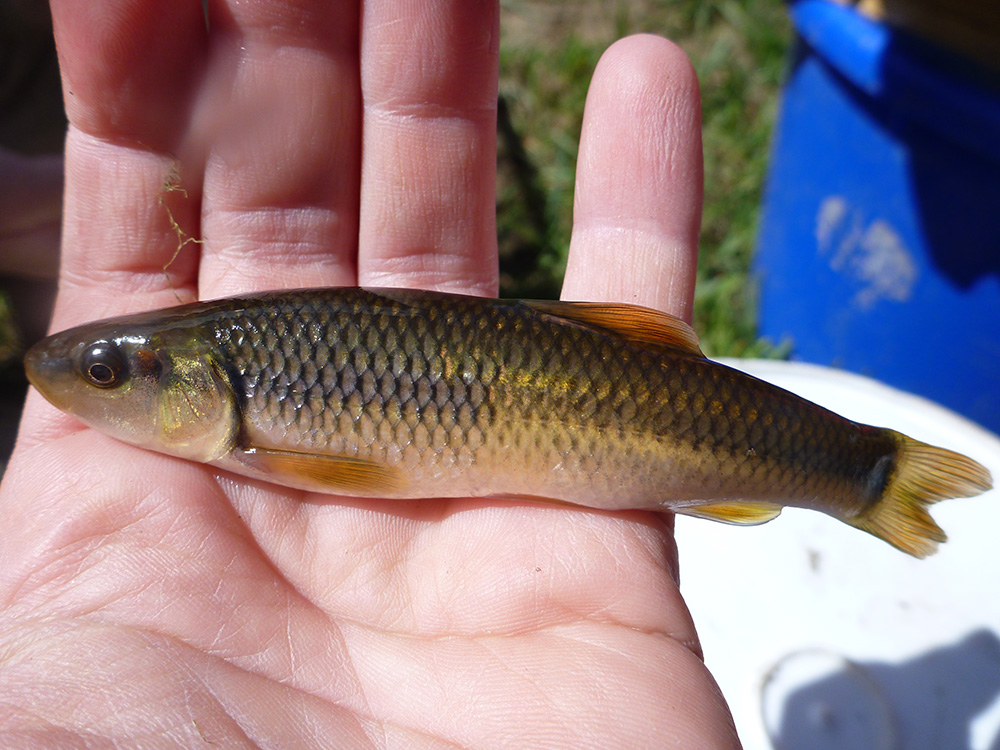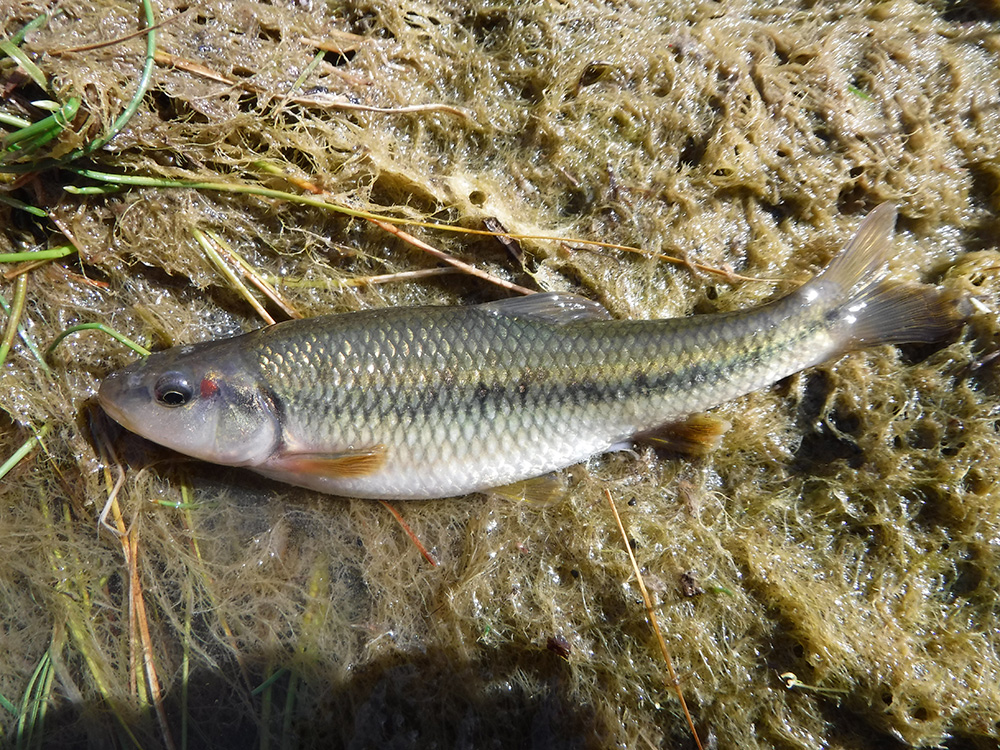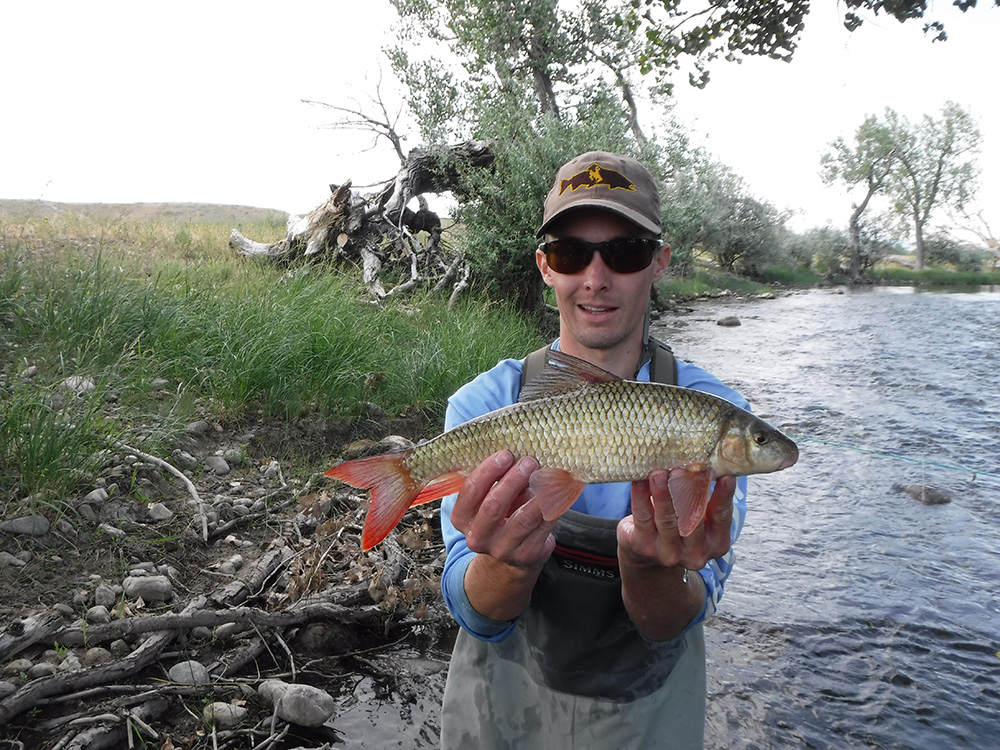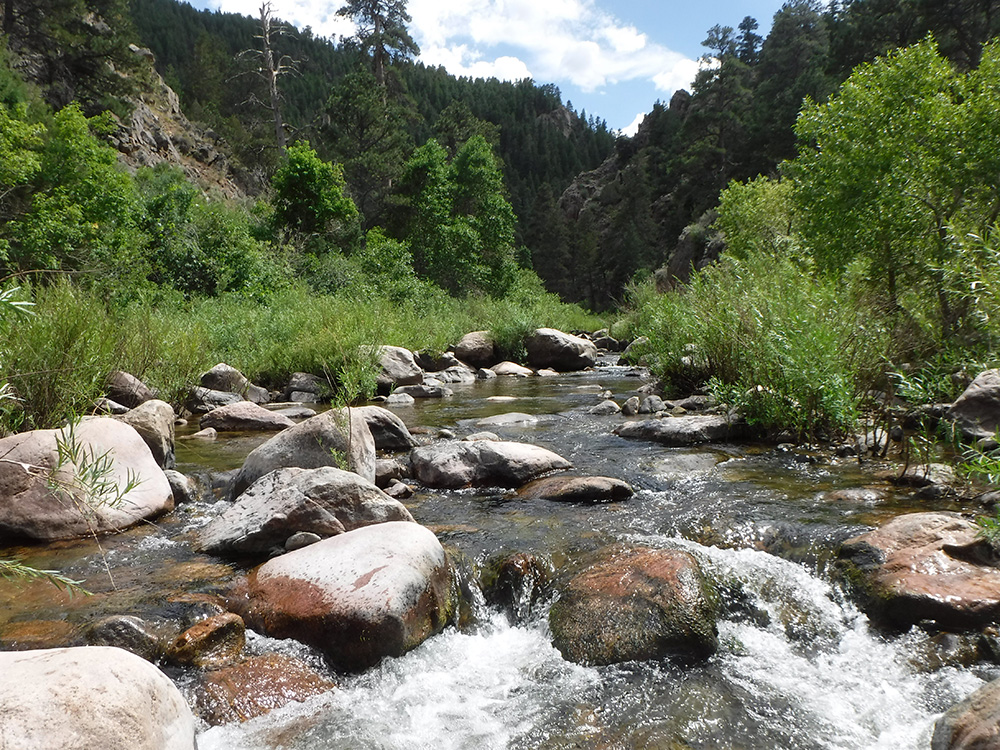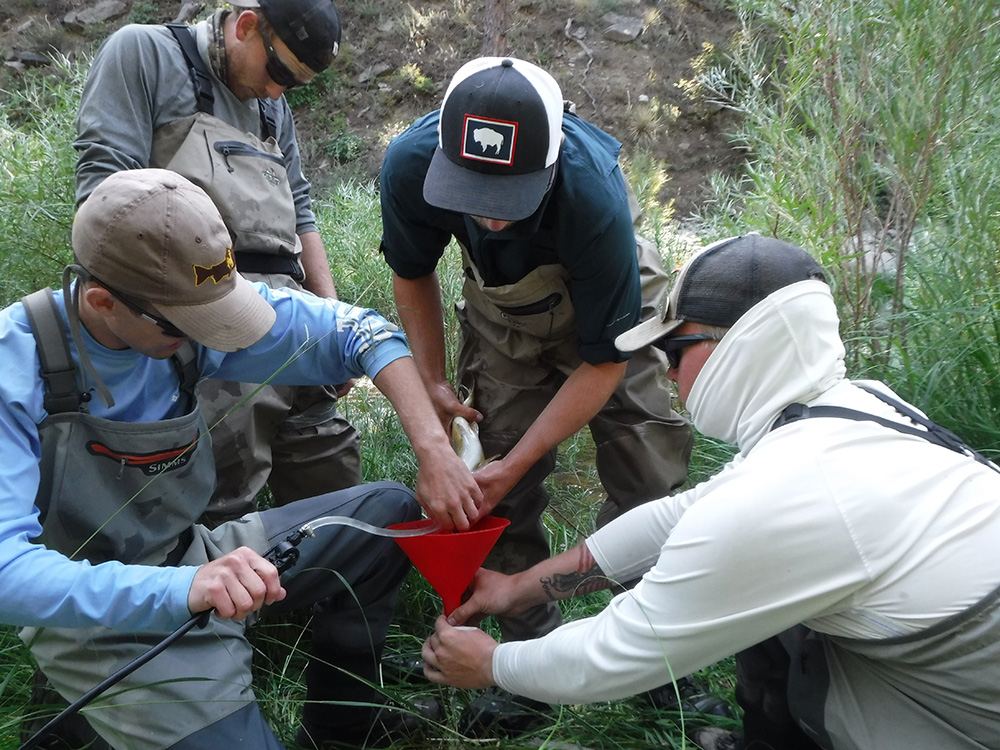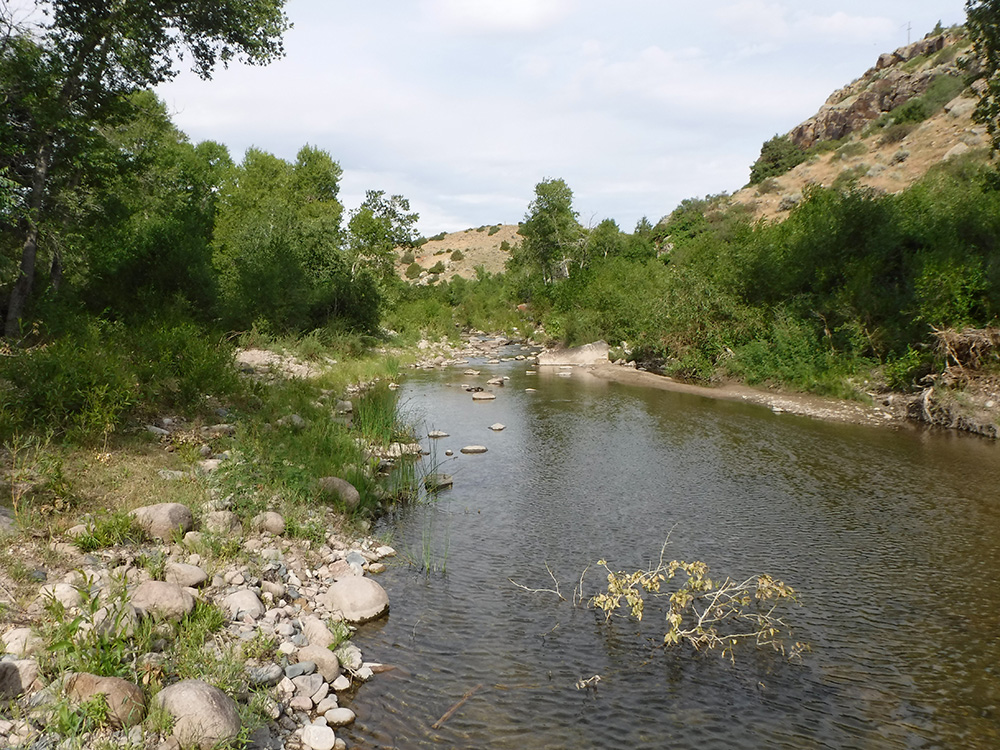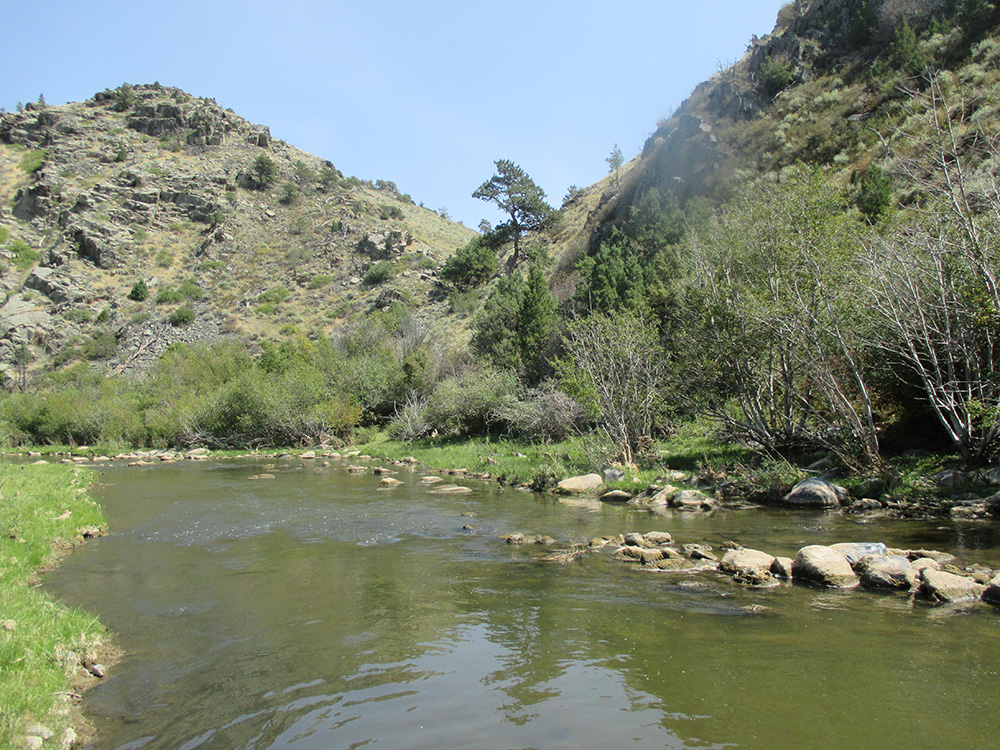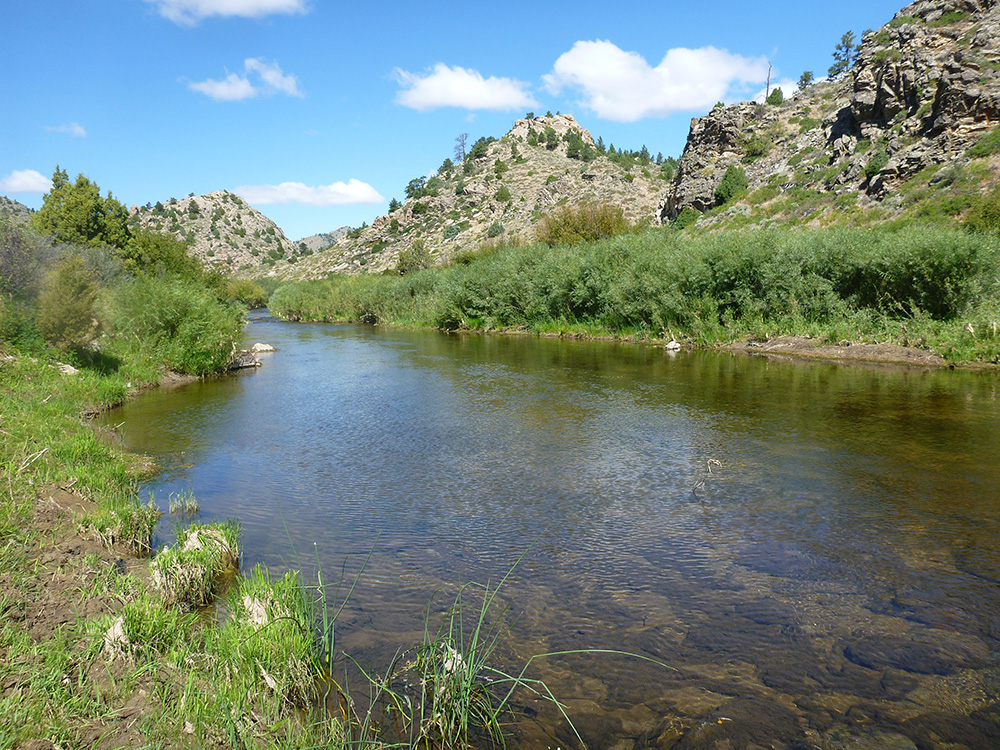Hornyhead chub in Wyoming have a highly limited distribution and are classified as a Species of Greatest Conservation Need by the Wyoming Game and Fish Department. Western populations of Hornyhead Chub are isolated glacial relicts that are disjunct from the main distribution of the species in the midwestern United States.
Glacial relict populations of Hornyhead Chub historically occurred in Wyoming, Colorado, western Kansas, and southwestern Nebraska, but all populations are thought to be extirpated except for two in the Laramie River drainage, Wyoming. Causes for population declines include: habitat degradation and fragmentation from irrigation diversions, land use practices that increase stream siltation, and predation by and competition with non-native fishes.
We evaluated potential reintroduction and new refugia sites in the North Platte drainage on the basis of habitat availability and fish community composition in 2016 and 2017. During this same timeframe we evaluated the effect of non-native piscivores on Hornyhead Chub populations in the Laramie River. The project outcome is expected to benefit managers by ensuring limited resources for Hornyhead Chub reintroduction are spent in areas where probability of establishment success is high. Additionally we hope to better understand the effect of nonnative predators on Hornyhead Chub Populations.
We found Rainbow Trout, Brown Trout, Brook Trout and Smallmouth Bass with Hornyhead Chub in the Laramie River. Nonnative predators had a significant negative effect on Hornyhead Chub populations (Figure 1), but Smallmouth Bass seemed to have the greatest impact. Compared to Salmonid species, Smallmouth Bass had a greater impact on Hornyhead Chub distribution, preyed on native fish more often, and became piscivorous at a smaller size. Smallmouth Bass appear to be the predominant limiting factor of Hornyhead Chub in the Laramie River.
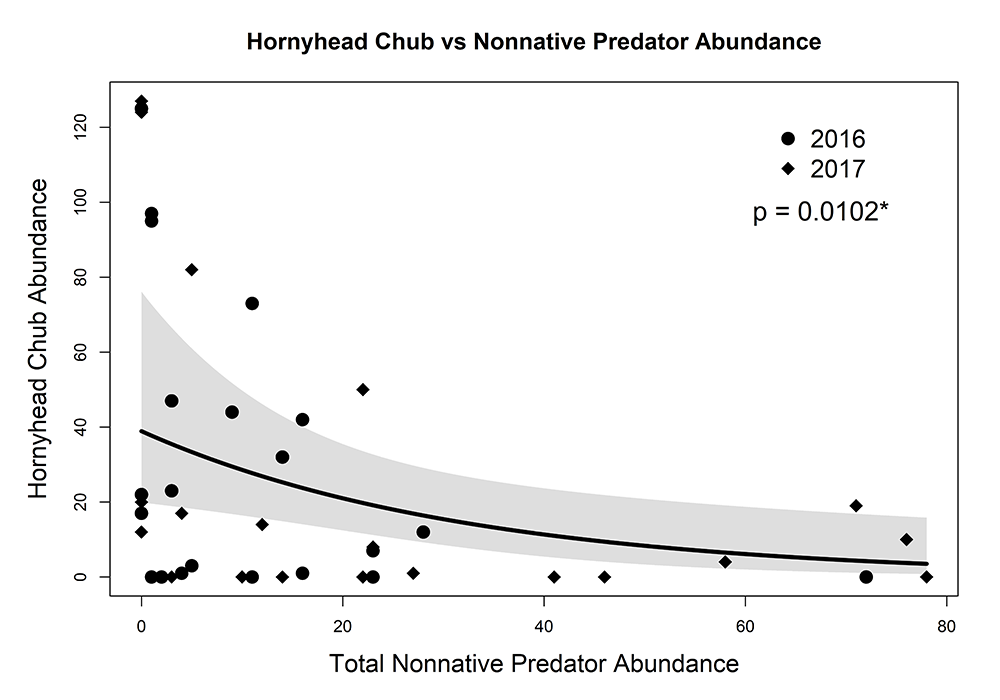
Figure 1: Estimated abundance of Hornyhead Chub declined as estimated abundance of all nonnative predators increased at Laramie River sites in 2016 (circles) and 2017 (diamonds). The fitted regression line from our negative binomial GLM (p = 0.0102) is represented in black, with the 95% confidence interval of the regression line shown in gray.
Contact
Brian Hickerson , MS Student
Department of Zoology and Physiology
Wyoming Cooperative Fish & Wildlife Research Unit
Dept. 3166, 1000 E. University Avenue
Laramie, WY 82070
Annika Walters, Assistant Unit Leader
U.S. Geological Survey,
Wyoming Cooperative Fish & Wildlife Research Unit
Department of Zoology & Physiology, University of Wyoming
Dept. 3166, 1000 E University Ave
Laramie, WY 82071
annika.walters@uwyo.edu
Project Lead
Brian Hickerson: Brian is a masters student researching suitable reintroduction and refugia sites for Hornyhead Chub in the North Platte drainage and the effect of non-native salmonids on chub populations in the Laramie River. MORE »
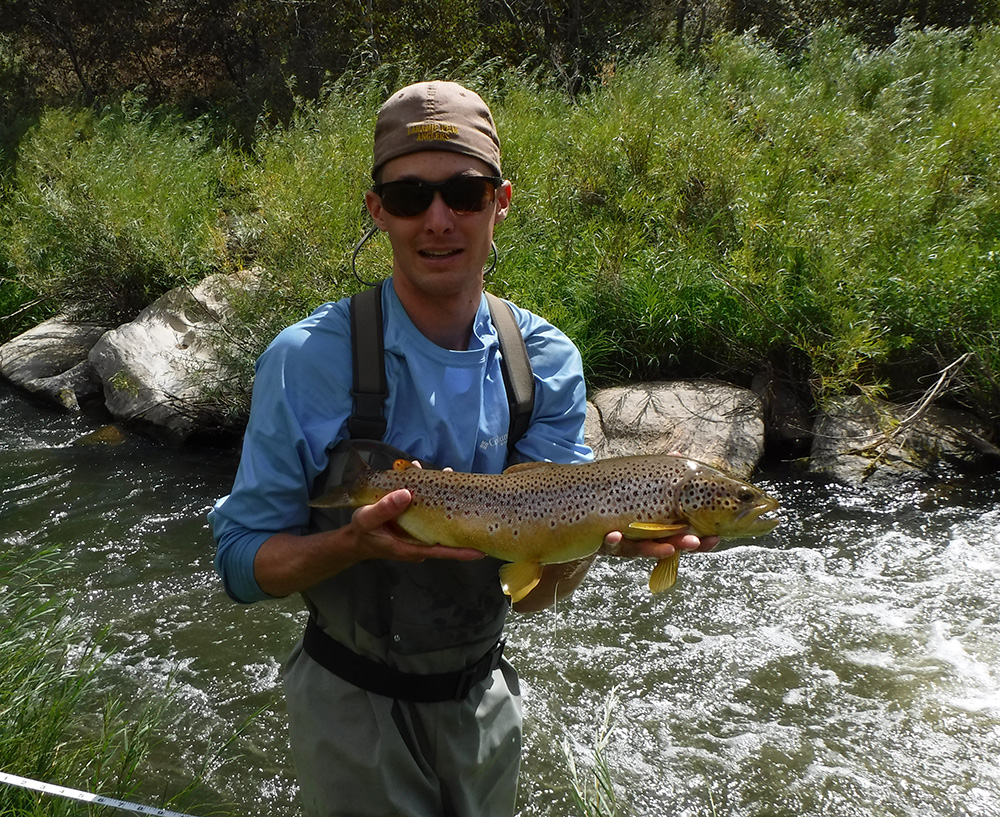
Timeline
2015- Project planning
2016- Data collection and analysis
2017- Data collection and analysis
2018- Data synthesis and presentation of results
Funding & Partners
- Wyoming Game and Fish Department
- University of Wyoming

